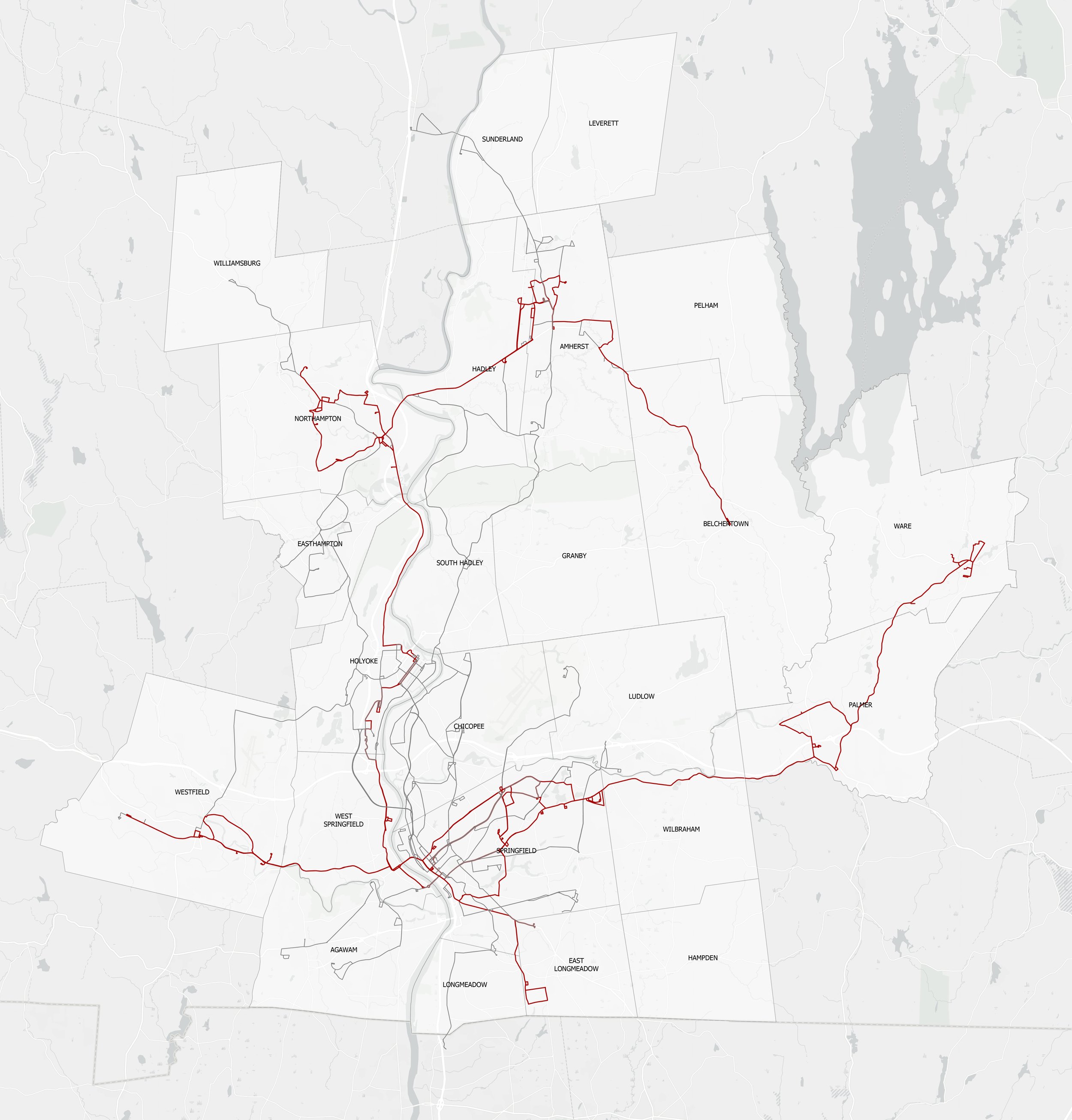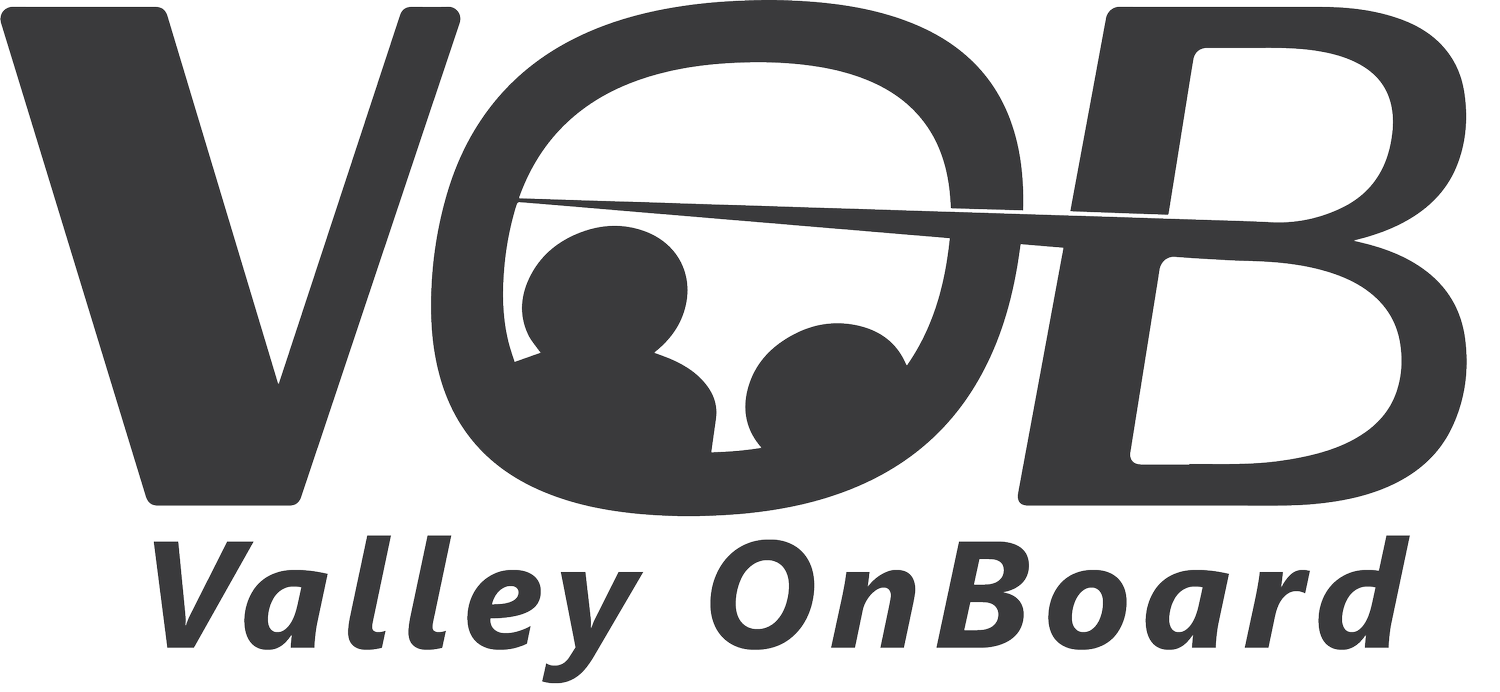
Massachusetts Transit Authorities
Pioneer Valley Transit Authority (PVTA)
Founded in 1974, the Pioneer Valley Transit Authority is the largest regional transit authority in Massachusetts with more than 300 buses and vans and 24 participating member communities.
PVTA was created by the state as a funding source and to provide oversight and coordination of public transportation within the Pioneer Valley region. PVTA does not operate or maintain buses, but contracts with local providers to deliver these services.
Funding for the PVTA primarily comes from federal, state and local governments, and farebox revenues. The 24 individual cities and towns that are served by the PVTA pay an assessed amount, depending on the number of fixed route miles and paratransit passengers served in that city or town.
Since local and state funding is based largely on ridership, maintaining and increasing ridership is essential for funding the transit network now and into the future.
You can learn more about our client here.
Valley On Board team will unveil a network redesign that addresses the goals of increased access, equity and efficiency, based on identifying service gaps based on existing conditions and plausible future scenarios.
GARAGE VISITS
To understand our region we thought that first steps should include speaking with those on the front lines of management and daily operations of the PVTA.
We began with our visit to the UMass Garage and followed this up with a trip to the brand new Springfield Facility, built in Spring 2019. These locations serve as the operations hubs to bulk of the users in our Region.
Speaking to operations managers provided us with a real sense of the current challenges being faced.

BUS RIDES
Additionally, to best understand our network, we got on buses and observed what it is like to rely on transit first hand. By riding a variety of geographically different routes throughout the system, we came to understand how diverse this region is. This gave us critical observations that we were able to explore further in our S.W.O.T. analysis and guided our preliminary understanding of the regional services provided.
Spatial and geographic data
Everyone deserves to have access to these resources and services, including those who cannot afford a car.
Critical destinations for people are things like hospitals, public schools, and SNAP retailers; places where people often go. Therefore, it is important to measure more than just jobs and housing!
For example, access to green spaces became especially important during the pandemic as it is a human need.
SWOT Analysis is a tool for looking at relationships between internal and external factors affecting a system.
This has been an iterative process, involving pooling observations from our various sources of analysis into these 4 overarching categories and through much discussion, whittle it down, make connections, and see how observations may be representative of system wide trends.
CASE STUDIES
Having completed a SWOT Analysis of the PVTA organization and operating environment and having established the context within which Valley On Board is aiming to develop network route design recommendations for PVTA, we then conducted case study research. These studies allowed us to gain context from practice and develop an in-depth understanding of the strategies being used by other transportation authorities around the United States. Studying how other agencies are managing the way people travel resulted in the compilation of a list of transit “best practices” which then informed development of our route design recommendations for PVTA. We selected five individual transportation authorities for in-depth study; the following section provides an overview of each agency, details the reason for their selection, and the practices we gleaned from each one.

PLANNER INTERVIEWS
The studio team first identified a municipal official in each of the PVTA member communities to be interviewed. These included Town Planners, Economic Development Officers, and chairs of the local Planning Board. The officials identified as candidates for the planner interviews varied depending on the size of the municipality. Larger municipalities, such as Springfield, maintains a professional staff in both planning and economic development, while smaller communities such as the town of Pelham, only had a contact listed for the chair of the Planning Board. Once our candidate pool was established, the studio created a survey with 10 questions focused on regional development efforts, transit connectivity, zoning and projected trends, as well as reviewing the working relationship between the towns and the PVTA. Each official was contacted, and the survey responses were collected via zoom, phone, and email. Their respective answers were uploaded to a table and the responses were coded using MAXQDA for further analysis. These interviews provided the team with a ground level review of how each municipality viewed the potential future of the valley and how it connects to the PVTA.













